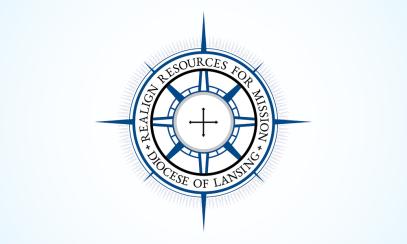Canonization of John Paul II and John XXIII
On July 5, 2013, the day that his first encyclical, Lumen Fidei (The Light of Faith), was released, Pope Francis approved the canonization of Pope John Paul II and Pope John XXIII. After signing decrees from the Congregation for the Causes of Saints, he immediately called for a consistory of cardinals to set the date and make plans for the ceremonies. Pope Francis announced the final decision on Sept. 30, 2013, explaining that both late popes would be declared saints at a single ceremony on April 27, 2014. The date is significant as it is Divine Mercy Sunday, a celebration instituted by Pope John Paul II.
John Paul II
Karol Józef Wojtyła was born on May 18, 1920, in Wadowice, Poland. On October 16, 1978, he became John Paul II, the first Polish pope and the first non-Italian pope since 1522. By the time of his death on April 2, 2005, he was one of the longest-serving popes in history.
One of the most influential leaders of the 20th century, John Paul II was instrumental in bringing an end to Communist rule both in Poland and the whole of Europe. His pontificate was also marked by tremendous strides in ecumenism and interreligious dialogue, as he was the first pope to visit both a mosque and a synagogue.
At his funeral in 2005, the faithful filled St. Peter’s Square with banners and shouts of “Santo subito,” or “Sainthood now.” In response, Pope-Emeritus Benedict XVI waived the traditional five-year waiting period for the canonization process to begin.
John Paul II was proclaimed “Venerable” on Dec. 19, 2009. He was beatified on May 1, 2011, on the feast of Divine Mercy. His beatification is the fastest on record, coming a little more than six years after his death and surpassing Mother Teresa’s record beatification in 2003 by a few days.
The required second miracle for canonization was certified as authentic by Pope Francis on July 5, 2013. According to a report from Catholic World News, the second miracle attributed to John Paul II involved a Costa Rican woman, who was cured of a cerebral aneurism on May 1, 2011, the date of the beatification of John Paul II.
John XXIII
Born the son of Italian sharecroppers and one of 13 children, Angelo Guiseppe Roncalli (Nov. 25, 1881-June 3, 1963) was ordained a priest in 1904 and went on to serve in various posts, such as papal nuncio, in several countries. He was elected pope on Oct. 28, 1958, at the age of 77. Because of his age, many expected him to be a “stop gap” pope, but things did not turn out that way.
The papacy got interesting right away with the man who would become affectionately known as “Good Pope John.” The fact that he chose the name John was significant because he was the first to do so in more than 500 years. Other popes had avoided the name because of the antipope John XXIII (1410-1415).
His decision on Dec. 25, 1958, to visit children infected with polio at a hospital in Rome made him the first pope to make pastoral visits in the Diocese of Rome since 1870. He followed this visit with a trip to a Roman prison the very next day. He also had a habit of sneaking out of the Vatican late at night in order to walk the streets of Rome. This behavior earned him the name “Johnny Walker.”
Administratively, he convoked a Roman Synod and established the Commission for the Revision of the Code of Canon Law. However, the calling of the Second Vatican Council was by far the greatest surprise of his papacy.
John XXIII made the call for the ecumenical council less than three months after his election, on Jan. 25, 1959. He had no detailed plan other than a very general idea of aggiornamento and a desire to seek Christian unity. He formally summoned the council on Dec. 25, 1961.
He was beatified on September 3, 2000. Interestingly, Pope Francis then waived the requirement for a second miracle on July 5, 2013, to clear the way for John XXIII’s canonization. According to Catholic News Agency, Vatican spokesman Father Federico Lombardi explained that the move “is something that is in the power of the pope; it’s not something particularly special ... For example, martyrs are beatified without any miracle, which means that miracles, because of tradition and theology, are commonly requested, but it’s not an absolute necessity.”
The Path to Sainthood at a glance…
The current procedure for causes of beatification and canonization can be found in the apostolic constitution Divinus Perfectionis Magister, promulgated by Pope John Paul II in 1983. The various stages leading to canonization are as follows:
Servant of God – The process can begin after at least five years have passed since the death of the candidate. It involves a diocesan-level investigation into the candidate’s exercise of Christian virtues considered heroic. At this point, the candidate can be called Servant of God.
Venerable – The investigation is passed on to the Congregation for the Causes of Saints in Rome. After a summary report obtains the necessary votes of nine reviewing theologians, the cause is passed on for examination by cardinals and bishops of the congregation. A recommendation then is made to the pope that he should issue a proclamation of the candidate’s heroic virtue. From the point of the pope’s proclamation, the candidate is referred to by the title of Venerable.
Blessed (Martyrs) – In the case of a martyr, the prefect of the Congregation presents the results of the investigation to the Holy Father, who gives his approval and authorizes the Congregation to draft the relative decree of beatification. The public reading and promulgation of the decree of beatification grants the candidate the title of Blessed.
Blessed (Confessors) – If the candidate was not a martyr but rather a confessor who died peacefully after a life of heroic virtue, a miracle attributable to the intercession of the candidate after his or her death is necessary. If the miracle is verified, a second decree is promulgated, with the decree on heroic virtue, which grants the candidate the title of Blessed.
Saint – In order for the Blessed to be canonized and acquire the title of saint, another miracle is required and must have occurred after his or her beatification.



